Bringing a new puppy into your home is an exciting time, filled with playful moments and endless cuddles. However, for many puppy parents, this joy is often accompanied by a unique challenge: aggressive chewing. From furniture legs to shoes, anything within reach can become a target for those sharp puppy teeth. This isn’t just a nuisance; it can be dangerous if your puppy ingests harmful materials or damages valuable household items. Finding the right chew toys that can withstand persistent gnawing and redirect destructive energy is crucial for both your puppy’s safety and your peace of mind.
At Dog Care Story, we understand this struggle intimately. Our team, along with our extended canine family at the shelter, has years of experience observing and managing the chewing habits of countless dogs, from tiny pups to powerful adult chewers. We know that the term “indestructible” is often loosely used in the pet industry, and a toy’s true durability is best tested by the very experts it’s designed for: our dogs! This comprehensive guide focuses on the Best Chew Toys For Aggressive Chewing Puppies, providing honest, real-world reviews to help you make informed choices.
If you’re considering adding a playful companion like a teddy bear miniature poodle for sale to your family, understanding their chewing habits from a young age is crucial.
Understanding Aggressive Chewing in Puppies
Aggressive chewing in puppies isn’t a sign of naughtiness; it’s a natural and important developmental behavior. However, without proper redirection, it can quickly become problematic.
Why Puppies Chew Aggressively
Puppies chew for a variety of reasons, and understanding these can help you address the behavior effectively:
- Teething: This is perhaps the most common reason. Just like human babies, puppies experience discomfort as their milk teeth fall out and adult teeth emerge. Chewing provides relief for sore gums.
- Exploration: Puppies use their mouths to explore the world around them, much like human toddlers use their hands. They learn about textures, tastes, and how objects respond to their bites.
- Boredom and Excess Energy: A puppy who isn’t sufficiently stimulated, either mentally or physically, will often turn to chewing as a way to self-entertain or burn off pent-up energy.
- Anxiety or Stress: New environments, separation from littermates, or changes in routine can cause stress, leading some puppies to chew as a coping mechanism.
- Attention-Seeking: If chewing on forbidden items gets a reaction (even a negative one), a smart puppy might learn to repeat the behavior to get your attention.
When Aggressive Chewing Becomes a Problem
While chewing is natural, it becomes a problem when:
- Your puppy damages household items, furniture, or personal belongings.
- They chew on dangerous items like electrical cords, plants, or small objects that could cause choking or internal injury.
- The chewing becomes obsessive or is directed at you (nipping and biting).
- You struggle to find toys that can withstand their chewing power for more than a few minutes.
What Makes a Chew Toy “Best” for Aggressive Chewing Puppies?
Choosing the right chew toy for your aggressive chewing puppy involves more than just picking the first “tough” toy you see. Several factors contribute to a toy’s suitability and safety.
Safety First
This is paramount. A chew toy should never pose a choking hazard or be made from materials that can break off and be ingested. Avoid toys with small parts that can be detached. The material should be non-toxic and durable enough not to splinter or shed pieces that could cause internal damage.
Durability and Material
For aggressive chewers, durability is key. Look for toys made from:
- Hard Rubber: Often used in KONG toys, this material is flexible yet incredibly tough.
- Nylon: Extremely strong and designed to withstand powerful jaws, like Nylabone products.
- Thick, Reinforced Fabrics: For rope toys, ensure they are tightly woven and not easily shredded. Always supervise with rope toys to prevent ingestion of fibers.
Avoid soft plastics, plush toys (unless specifically designed for heavy chewers and labeled as such), and toys with thin rubber or fabric that can be easily torn.
Size and Appropriateness
A toy must be appropriately sized for your puppy. Too small, and it becomes a choking hazard. Too large, and it might not be comfortable or stimulating for them to chew. Always check the manufacturer’s recommendations for weight and age. For those interested in smaller breeds, perhaps even a teddy bear toy poodle for sale, rest assured that even tiny teeth can be quite destructive.
Engagement and Enrichment
The best chew toys do more than just provide a chewing outlet; they offer mental stimulation. Treat-dispensing toys, puzzle toys, and toys with interesting textures can keep your puppy engaged for longer periods, reducing boredom-induced chewing.
Dental Benefits
Some chew toys are designed with ridges, nubs, or textures that help clean teeth and massage gums as your puppy chews, promoting better dental health and providing extra relief during teething.
Our Testing Process: Expert Reviews from the Dog Care Story Team
To help you navigate the vast market of puppy chew toys, the Dog Care Story team conducted rigorous real-world testing. While our primary expert reviewers, the dogs at our shelter, are mostly strong adult chewers, their feedback is invaluable. If a toy can withstand the intense chewing power of an adult Pit Bull or Cane Corso, it provides strong insight into its potential durability for an aggressive chewing puppy. We considered factors like material resilience, engagement level, and how well each toy held up to persistent chewing, specifically adapting our recommendations for puppies.
We purchased and tested five “indestructible” toys over a week, subjecting them to hours of chewing, playing, burying, and fetching. The results, as told by our furry experts like Nero, Maya, and Black Nero, are in.
Top Chew Toys for Aggressive Chewing Puppies: Detailed Reviews
Here are our detailed evaluations of the chew toys we tested, with a specific focus on their suitability for aggressive chewing puppies.
1. Nylabone Extreme Tough Dog Chew Toy
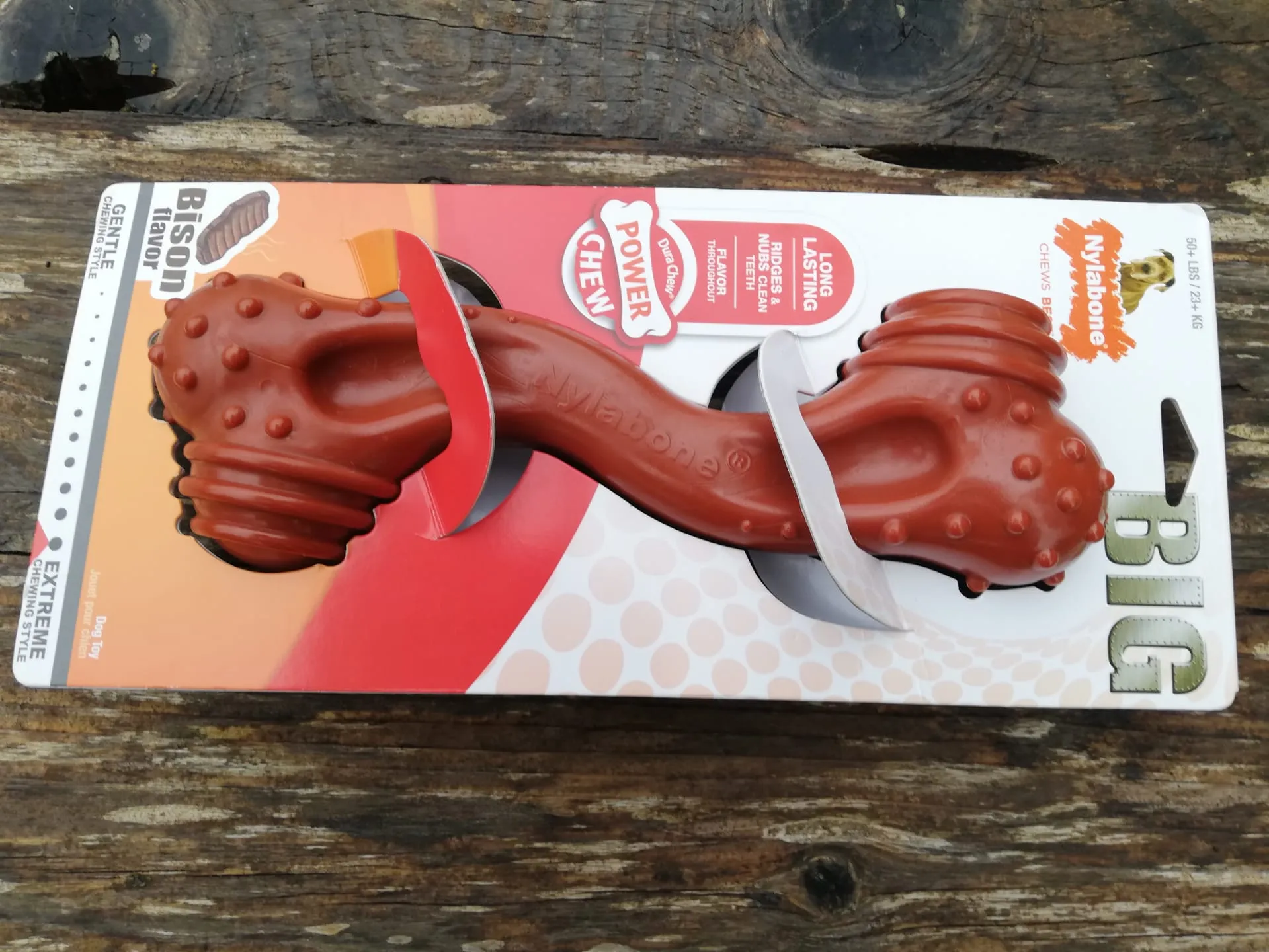 Nylabone Extreme Tough Dog Chew Toy in a dog's mouth
Nylabone Extreme Tough Dog Chew Toy in a dog's mouth
This Bison-flavored XXL chew toy is advertised for powerful chewers and dogs over 23kg. Our 9-year-old Pit Bull, Nero, spent hours on it, leaving barely a mark. Its large size might be too much for smaller puppies, but it’s an excellent choice for medium to large breed puppies known for their strong jaws. The slightly curved design makes it easy for pups to grip with their paws, enhancing the chewing experience.
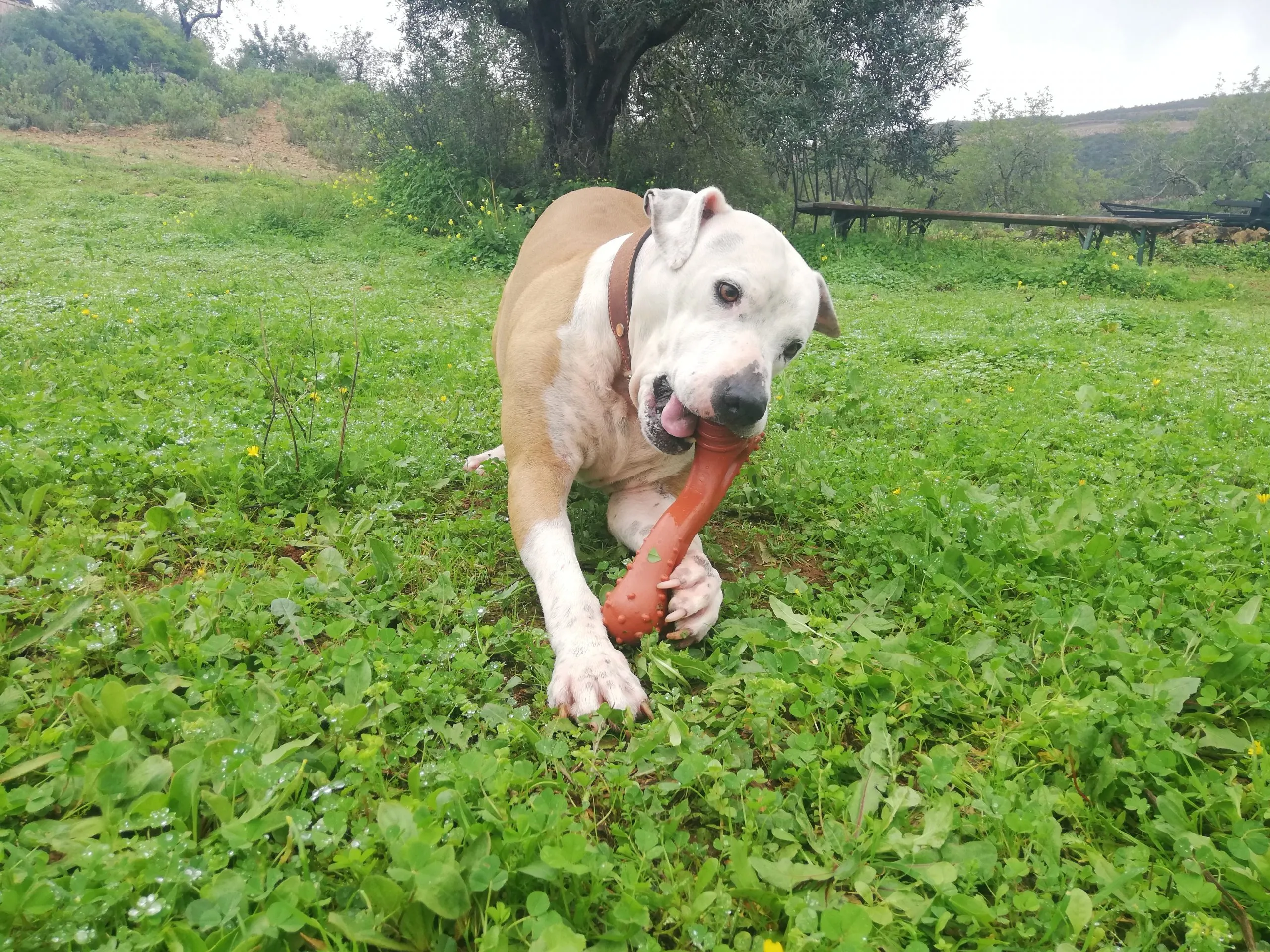 White Nero puppy testing the Nylabone Extreme Chew Toy
White Nero puppy testing the Nylabone Extreme Chew Toy
Even Maya, a 3-year-old who was initially shy with toys, immediately took to this Nylabone, enjoying both chewing and carrying it around. For aggressive chewing puppies, the long-lasting flavor and textured surface are fantastic. The raised “noodles” on the toy are also designed to help clean teeth and gums, making it a great option for teething puppies. It’s easy to clean and leaves no mess or lingering odors, a big plus for puppy parents.
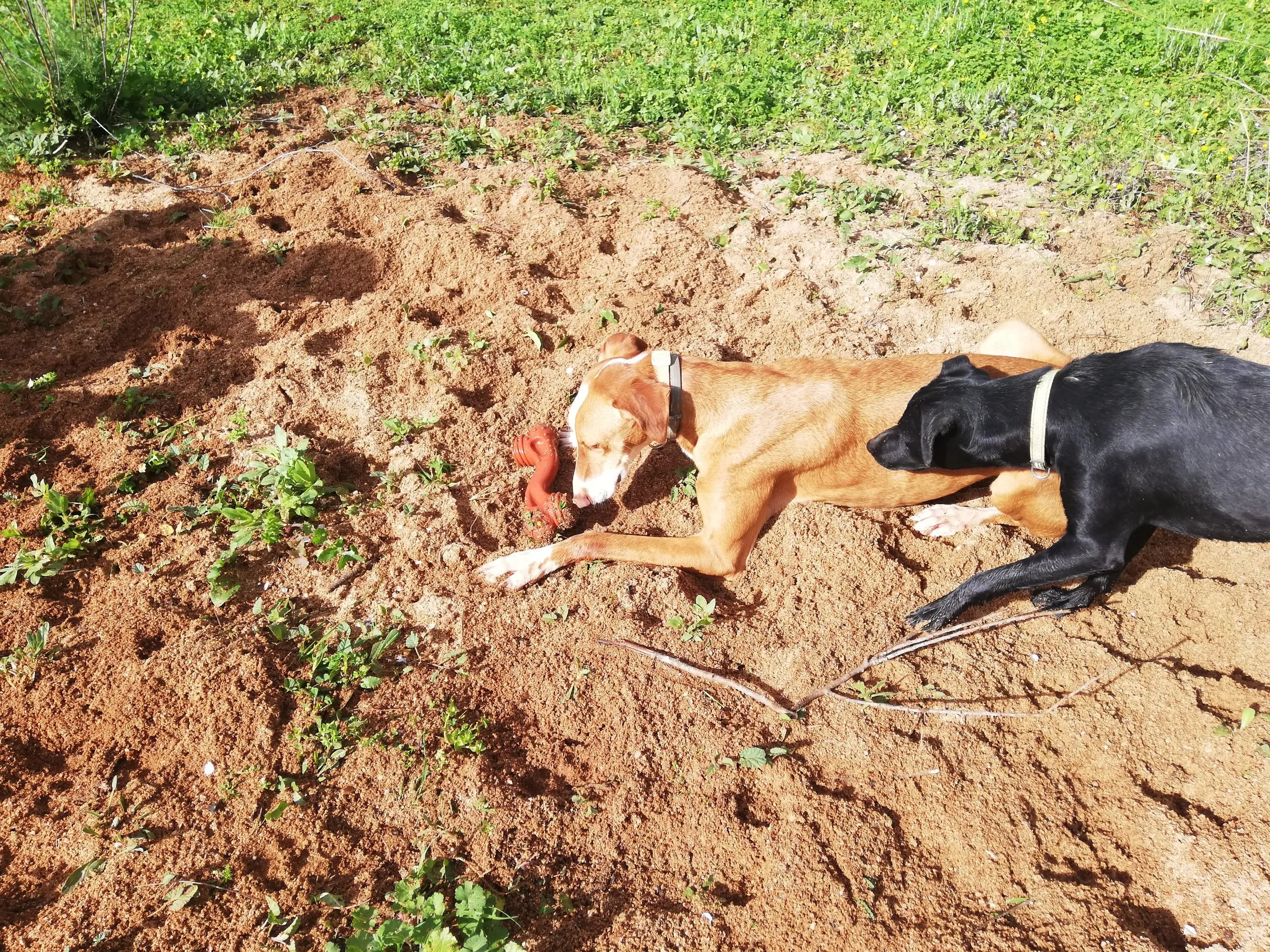 Max and Maya playing with the durable Nylabone chew toy
Max and Maya playing with the durable Nylabone chew toy
Black Nero, a Cane Corso cross known for his ability to chew through tree trunks and even strong fencing, found this Nylabone to be a formidable opponent. Despite hours of relentless chewing, it showed almost no signs of damage. This resilience makes it a prime candidate for the most aggressive chewing puppies, especially those of larger breeds.
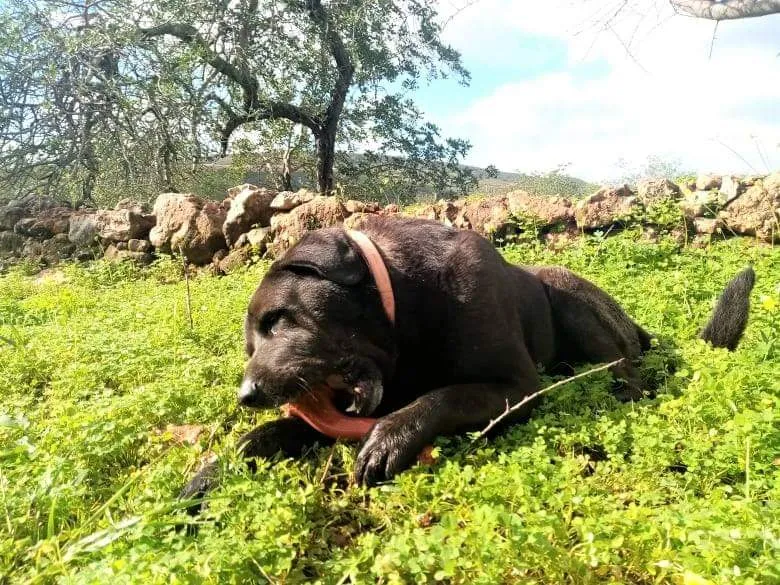 Black Nero, a powerful puppy, trying to chew the Nylabone
Black Nero, a powerful puppy, trying to chew the Nylabone
The Details
- Flavor: Bison-flavored throughout (also available in chicken and turkey), encouraging persistent chewing.
- Dental Benefits: Raised textures help clean teeth and gums.
- Material: Safe and non-toxic.
- Measurements: 30.48 x 13.97 x 5.08 cm (XXL size).
- Weight: 485 grams.
- Designed for: Dogs 23 kg+ (Consider appropriate size for your puppy).
Summary for Puppies: This Nylabone is an excellent investment for aggressive chewing puppies, particularly larger breeds. Its extreme durability and built-in dental benefits make it one of the best chew toys for aggressive chewing puppies. The persistent flavor keeps puppies engaged, providing a safe and satisfying outlet for their strong chewing instincts.
2. Kong Rewards Ball
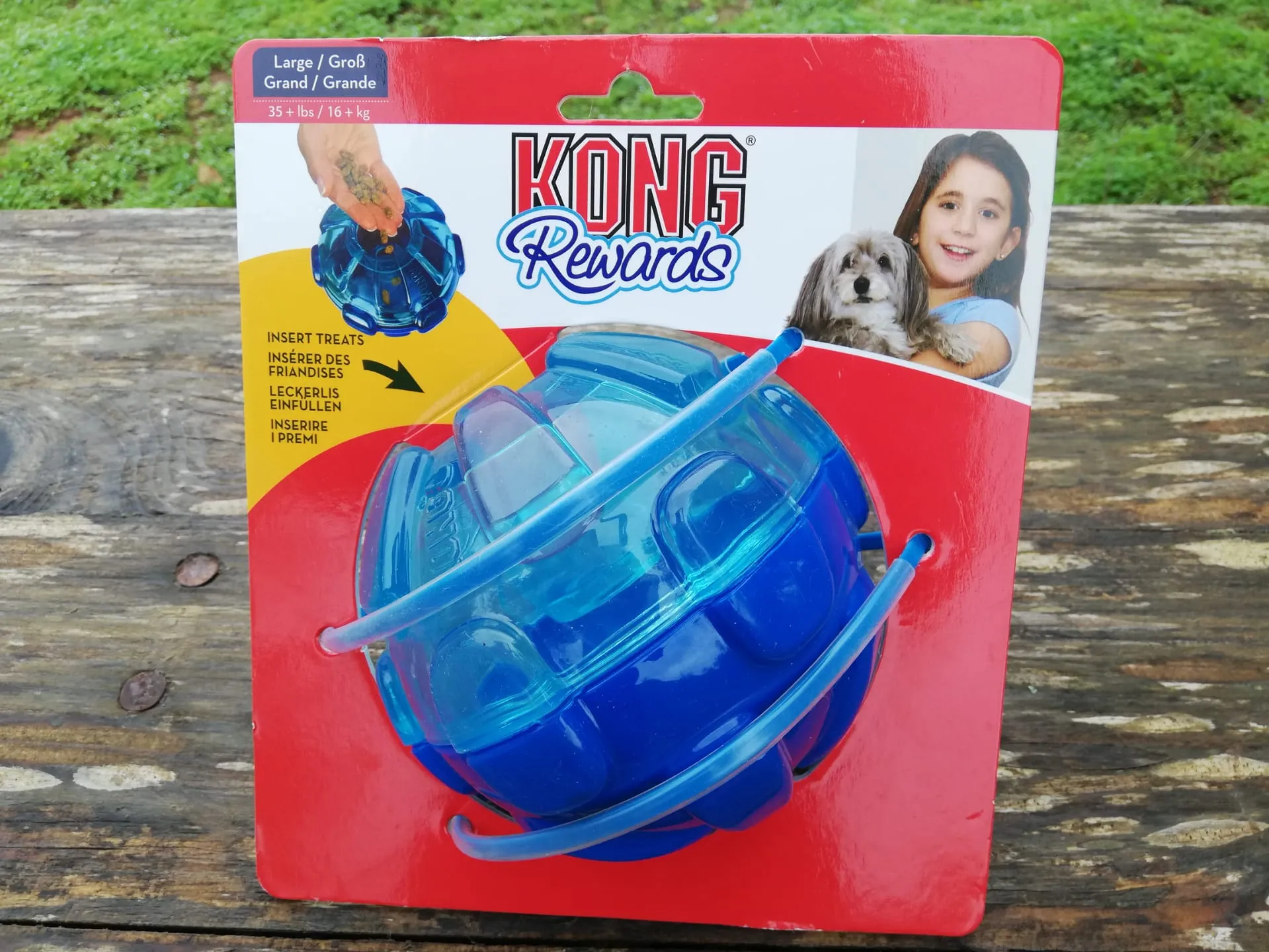 Kong Rewards Ball for treats and play
Kong Rewards Ball for treats and play
The KONG Rewards Ball combines playtime with treat dispensing, a clever concept that can be highly engaging for puppies. While our adult dogs initially showed less enthusiasm for its treat-dispensing aspect compared to other toys, they eventually loved its squishy, bouncy side. For puppies, the combination of physical play and mental stimulation from trying to get treats out is a great way to redirect aggressive chewing energy.
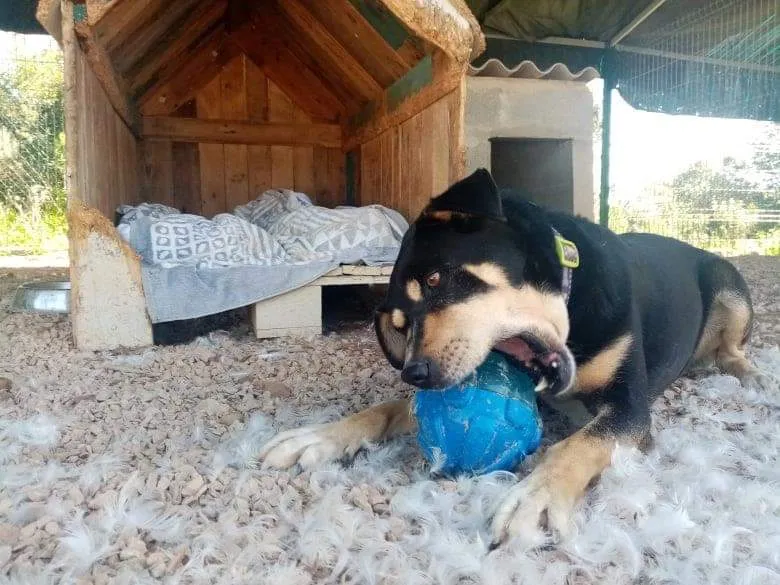 Jean, a dog, actively chewing on the KONG Rewards Ball
Jean, a dog, actively chewing on the KONG Rewards Ball
Jean, one of our testers, absolutely adored this toy, burying it and spending hours chewing the rubbery side. The durable KONG rubber proved to be very tough, showing no tooth marks even after extensive chewing. This makes it a strong contender for aggressive chewing puppies, as the robust material can stand up to powerful puppy jaws. The simple treat dispenser, which doesn’t require excessive brainpower for puppies to figure out, encourages positive association with the toy.
 Nora, a dog, interacting with the KONG Rewards Treat Ball
Nora, a dog, interacting with the KONG Rewards Treat Ball
The Details
- Functionality: Interactive treat dispenser combined with a bouncy chew toy.
- Material: Long-lasting KONG rubber, known for its durability.
- Measurements: 12.7 x 12.7 x 12.07 cm (suitable for medium to large puppies).
- Weight: 417 Grams.
- Designed for: Dogs 16 kg+ (ensure size is appropriate for your puppy to prevent choking).
Summary for Puppies: The KONG Rewards Ball is a durable and stimulating toy that combines two of a puppy’s favorite things: play and food. Its tough rubber construction makes it suitable for aggressive chewing puppies, while the treat-dispensing feature provides valuable mental enrichment, helping to curb destructive chewing out of boredom. It’s an excellent choice for redirecting energy and promoting healthy chewing habits.
3. CyunCmay Indestructible Dog Toy XL Bone
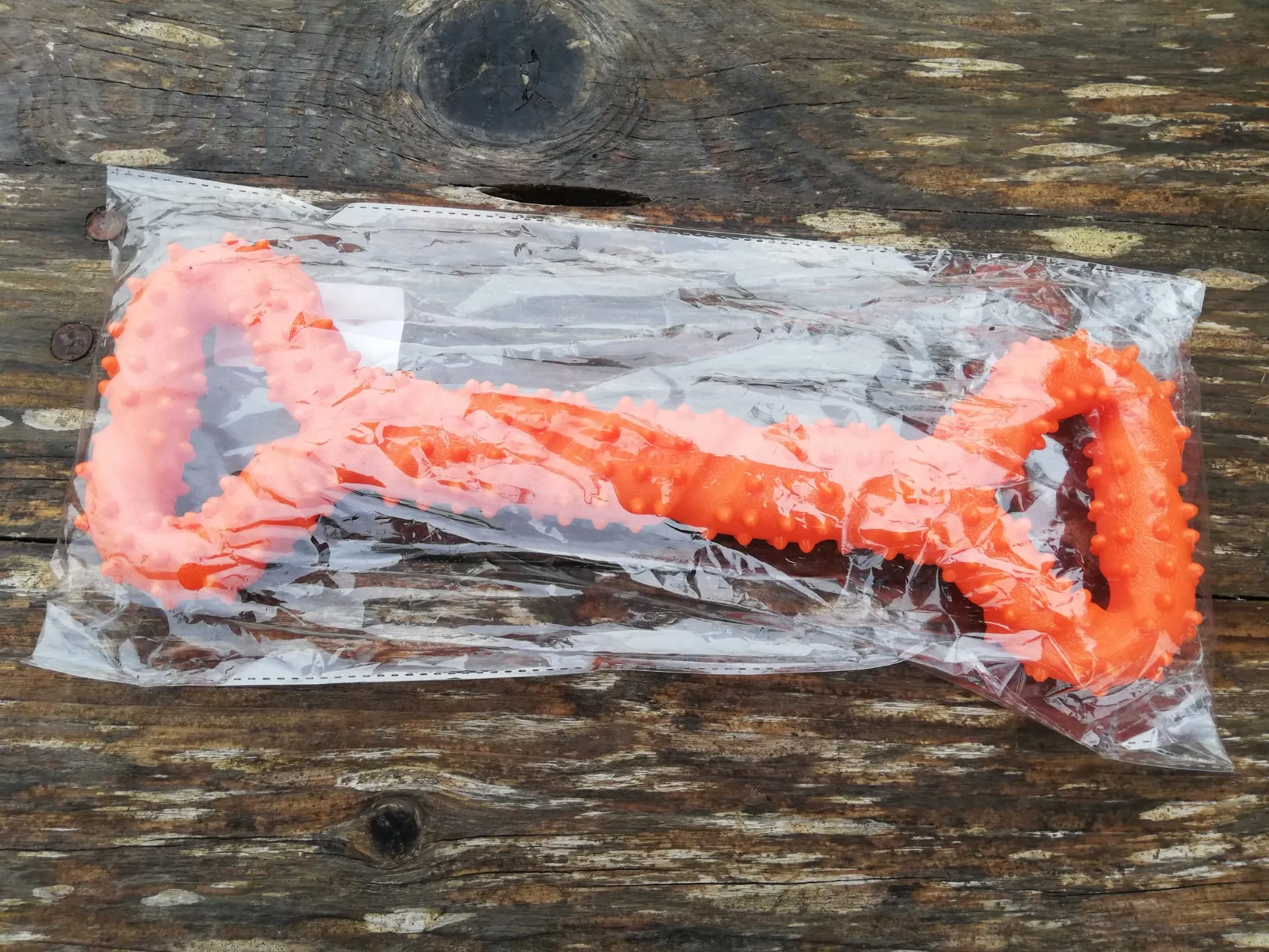 CyunCmay Indestructible Dog Toy XL Bone
CyunCmay Indestructible Dog Toy XL Bone
This toy generated a lot of initial excitement among our dogs due to its inviting look and handles. However, its “indestructible” claim quickly faltered under the intense scrutiny of Black Nero. Within 30 minutes, this toy, despite its “soft rubbery texture and bendy, pliable material,” showed significant teeth marks and was almost split in two.
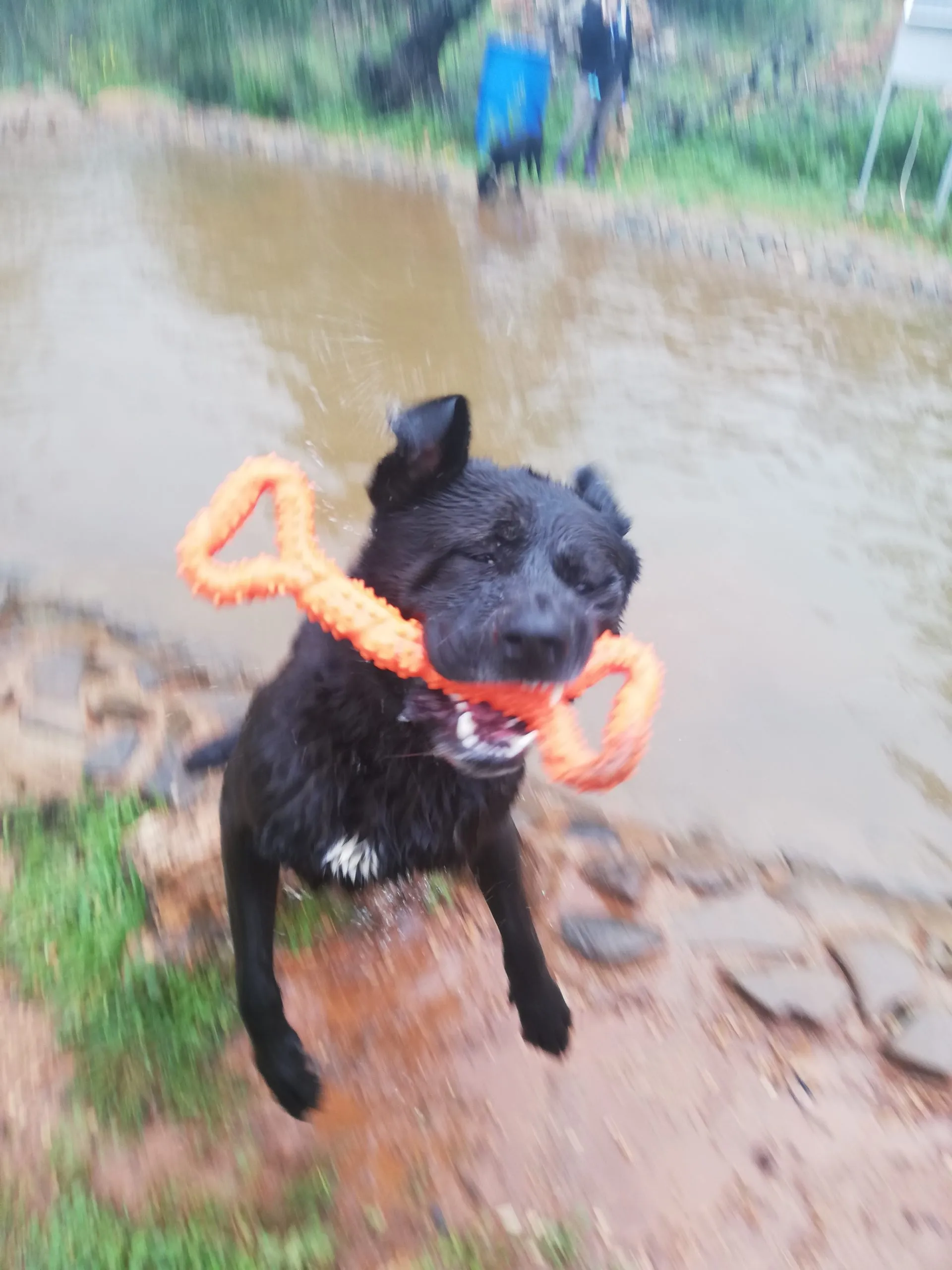 Black Nero, a powerful puppy, aggressively chewing the CyunCmay toy
Black Nero, a powerful puppy, aggressively chewing the CyunCmay toy
For aggressive chewing puppies, this result is a significant red flag. Puppies, especially those with powerful jaws, could easily tear off and ingest pieces of this toy, leading to choking hazards or internal blockages. While our dogs enjoyed playing tug-of-war and fetching it from the lake, it simply did not stand up to dedicated chewing.
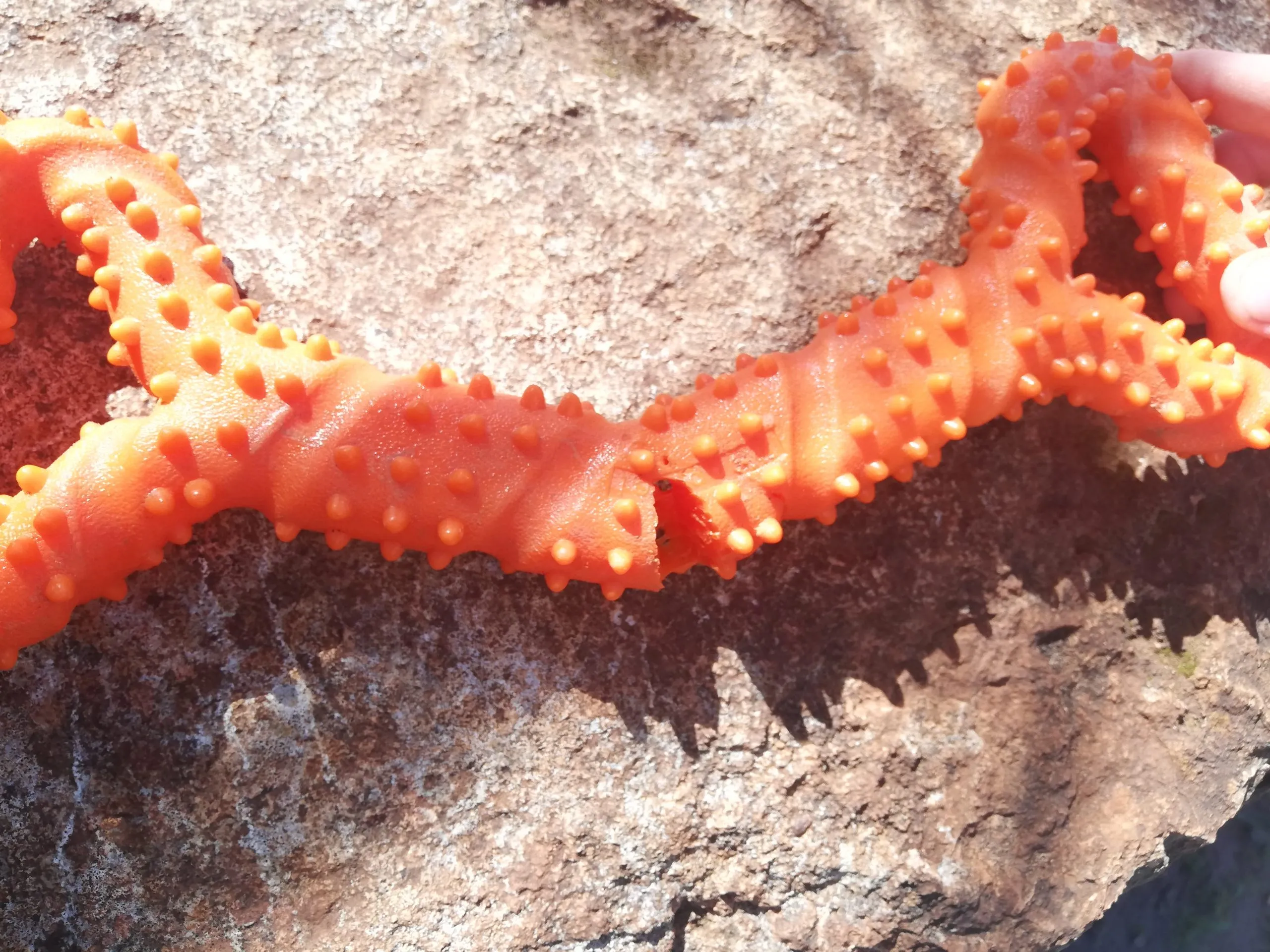 The damaged CyunCmay orange bone with visible teeth marks
The damaged CyunCmay orange bone with visible teeth marks
The Details
- Material: TPR environmentally friendly material.
- Measurements: 32.9 x 12.2 x 3.8 cm.
- Weight: 330 Grams.
- Dental Features: Surface designed to help clean a dog’s teeth and control plaque and tartar (though durability limits its effectiveness).
Summary for Puppies: Despite its initial appeal and dental claims, the CyunCmay XL Bone is not recommended as a chew toy for aggressive chewing puppies. Its lack of durability means it can be easily destroyed, posing a serious safety risk if pieces are swallowed. While it might be suitable for supervised interactive play (like fetching) for puppies that aren’t heavy chewers, it fails the “indestructible” test crucial for aggressive chewers.
4. HETOO Indestructible Squeaky Dental Care Dog Toy
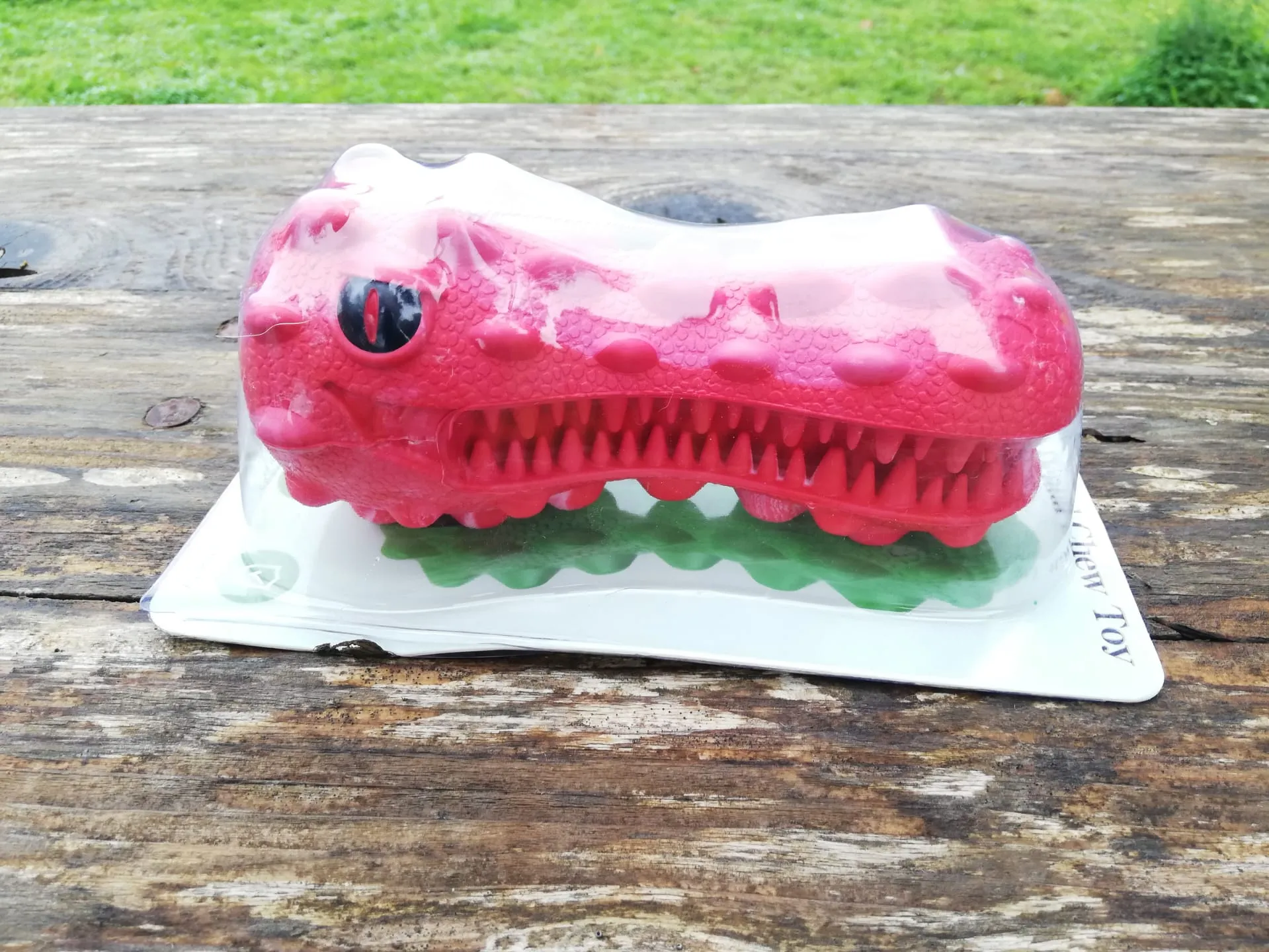 Hetoo Squeaky Dental Care Dog Toy
Hetoo Squeaky Dental Care Dog Toy
This toy, designed primarily for dental cleaning with an added squeaker, didn’t garner much excitement from our expert reviewers. Even the squeak failed to engage them, and Maya initially ran to hide. To encourage interaction, we tried stuffing peanut butter into its grooves. This held Maya’s interest for a few minutes, but she quickly lost enthusiasm.
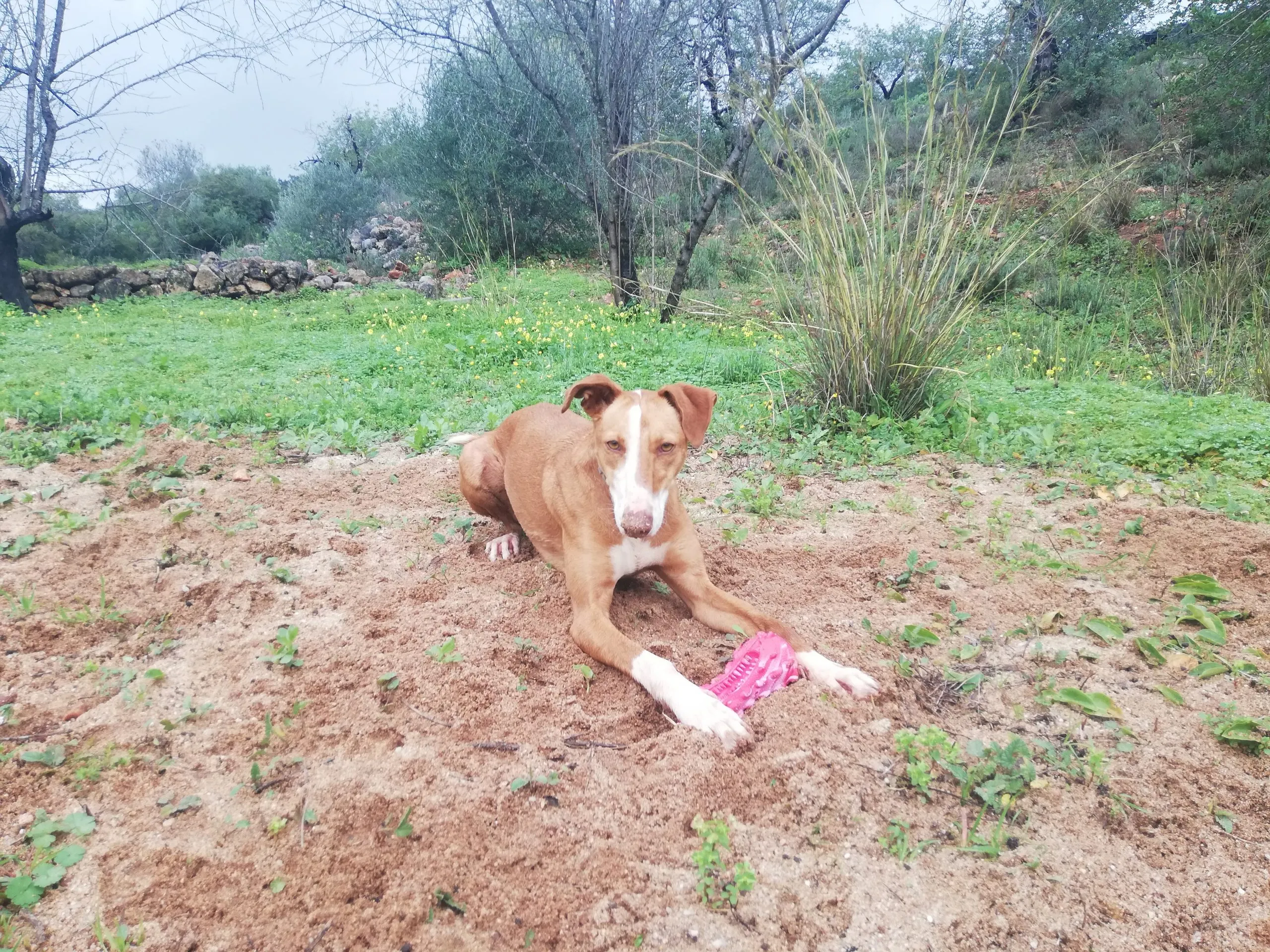 Maya, a puppy, inspecting the Hetoo Dental Toy
Maya, a puppy, inspecting the Hetoo Dental Toy
For aggressive chewing puppies, a toy needs to be both durable and highly engaging. While this toy is made from natural rubber, its design might not offer the satisfying chewing resistance or interactive play that truly captures a puppy’s attention for long periods. The squeaker, which was meant to be a draw, was largely ignored or even startled some of our dogs.
The Details
- Material: Made from natural rubber.
- Measurements: 12.7 x 12.7 x 12.07 cm.
- Weight: 417 Grams.
- Features: Squeaker and dental grooves.
Summary for Puppies: The Hetoo Squeaky Dental Care Dog Toy did not prove to be a compelling option for aggressive chewing puppies. Its lack of sustained engagement means puppies are likely to lose interest quickly, potentially redirecting their destructive chewing elsewhere. While it might serve as a mild dental aid for light chewers or as a temporary treat dispenser with high-value fillers, it is not suitable as a primary chew toy for aggressive chewing puppies who require robust, long-lasting stimulation.
5. Kong Wobbler Interactive Treat Dispensing Dog Toy
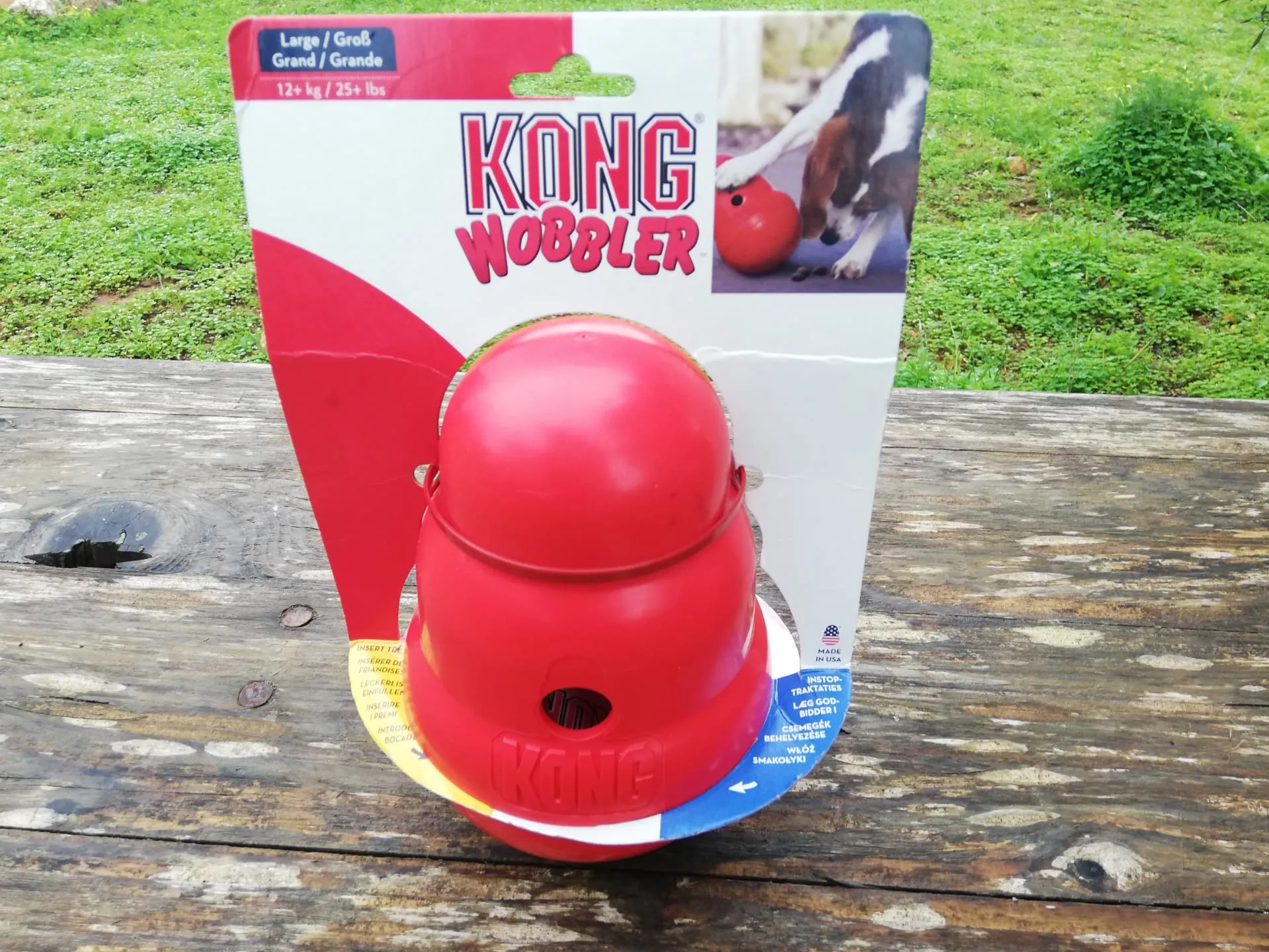 Kong Wobbler Interactive Treat Dispensing Dog Toy
Kong Wobbler Interactive Treat Dispensing Dog Toy
The KONG Wobbler sparked curiosity among our dogs. Unlike other KONG toys, it’s made from a harder plastic polymer rather than rubber, making it highly durable against chewing attempts. Its primary function is mental enrichment, dispensing treats as dogs bat it around. For puppies, especially aggressive chewers, this toy provides a fantastic mental challenge that can help tire them out and reduce boredom-induced chewing.
Initially, our dogs struggled a bit, and we realized it works best on smooth surfaces and requires appropriately sized treats. Once these factors were addressed, the Wobbler became a hit. Its large size (diameter 13 x 19 cm) makes it difficult for puppies to pick up and chew directly, which is a great safety feature, preventing direct aggressive chewing attempts on the toy itself. Instead, they interact with it by pushing and nudging to get treats, fulfilling their natural instincts in a constructive way.
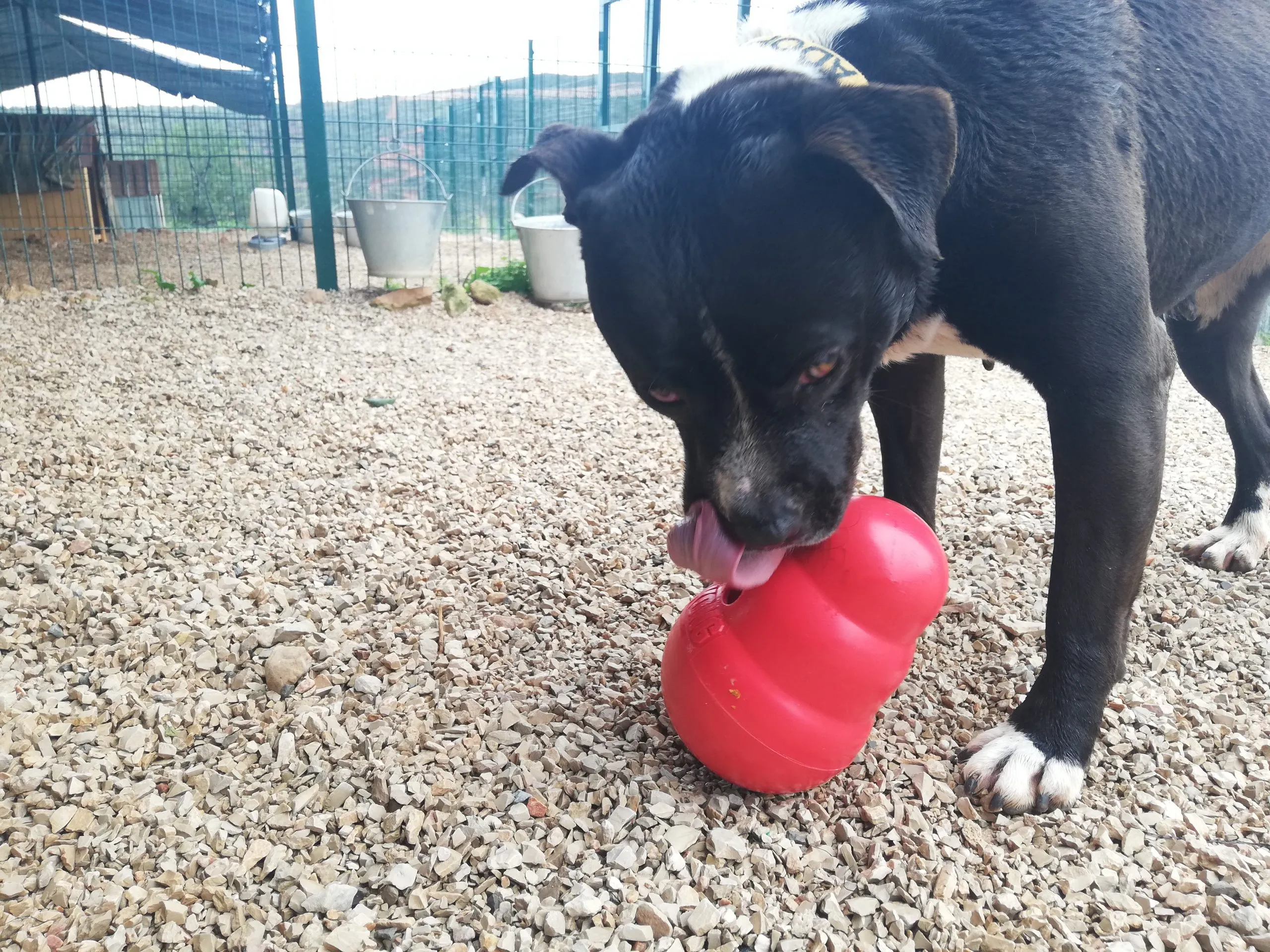 Pebbles, a dog, interacting with the KONG Wobbler toy
Pebbles, a dog, interacting with the KONG Wobbler toy
The Details
- Material: Hard plastic polymer.
- Measurements: Diameter 13 x 19 cm.
- Weight: 485 grams.
- Designed for: Dogs 12 kg+ (suitable for larger puppies; check for smaller sizes if available).
- Filling Capacity: Maximum 250 grams.
Summary for Puppies: The KONG Wobbler is an exceptional tool for aggressive chewing puppies, not primarily as a chew toy, but as an interactive treat dispenser that provides significant mental stimulation. Its robust construction ensures it withstands accidental chewing, while its design encourages problem-solving and reduces boredom-driven destructive behaviors. It’s an excellent addition to a puppy’s toy arsenal, offering a different type of engagement crucial for well-rounded development.
Choosing the Right Chew Toy for Your Puppy: Key Considerations
When selecting a chew toy for your aggressive chewing puppy, keep these points in mind:
- Puppy’s Size and Breed: Match the toy’s size and durability to your puppy’s current size and anticipated adult size and jaw strength. A Labrador puppy will need a tougher toy than a Chihuahua puppy.
- Material Safety: Always opt for non-toxic, pet-safe materials that won’t splinter or be easily ingested.
- Engagement Factor: Does the toy offer enough stimulation (texture, flavor, treat dispensing) to keep your puppy interested for extended periods?
- Durability Rating: Look for toys specifically marketed for “heavy chewers” or “power chewers.”
- Vet Recommendations: If your puppy’s chewing is extreme, consult your veterinarian or a professional dog trainer for personalized advice.
Safety Tips for Puppy Chewing
Even with the best toys, supervision and proper management are key to safe chewing.
- Supervise: Always supervise your puppy with new chew toys, especially aggressive chewers, to ensure they aren’t breaking off and ingesting pieces.
- Inspect Regularly: Check toys for wear and tear. Discard any toy that is broken, splintered, or has pieces missing.
- Rotate Toys: Keep a variety of safe chew toys available and rotate them to maintain your puppy’s interest.
- Provide Alternatives: When your puppy chews something inappropriate, gently redirect them to an approved chew toy.
- Avoid Rawhides: For aggressive chewers, rawhides can pose a choking hazard or cause digestive issues.
- Mental and Physical Exercise: Ensure your puppy gets enough physical activity and mental stimulation throughout the day to reduce boredom-induced chewing.
Conclusion: Finding Your Puppy’s Perfect Match
Managing an aggressive chewing puppy requires patience, consistency, and the right tools. Based on our extensive testing and expert observations, the Nylabone Extreme Tough Dog Chew Toy and the KONG Rewards Ball stand out as excellent choices for providing durable, satisfying chewing outlets. The KONG Wobbler offers vital mental enrichment that complements physical chew toys, while the CyunCmay Bone and Hetoo Dental Toy were less suitable for aggressive chewers due to their limited durability or engagement.
Remember, the goal is to redirect your puppy’s natural chewing instincts toward safe and appropriate items, protecting both your belongings and your puppy’s health. By investing in the best chew toys for aggressive chewing puppies, coupled with consistent training and supervision, you can foster positive chewing habits and enjoy a harmonious life with your growing canine companion. Always prioritize safety, and when in doubt, consult with your veterinarian or a certified dog trainer.
References
- American Veterinary Medical Association (AVMA). “Dental Care for Pets.”
- American Society for the Prevention of Cruelty to Animals (ASPCA). “Destructive Chewing.”
- Association of Professional Dog Trainers (APDT). “Puppy Chewing: Why and How to Manage.”
